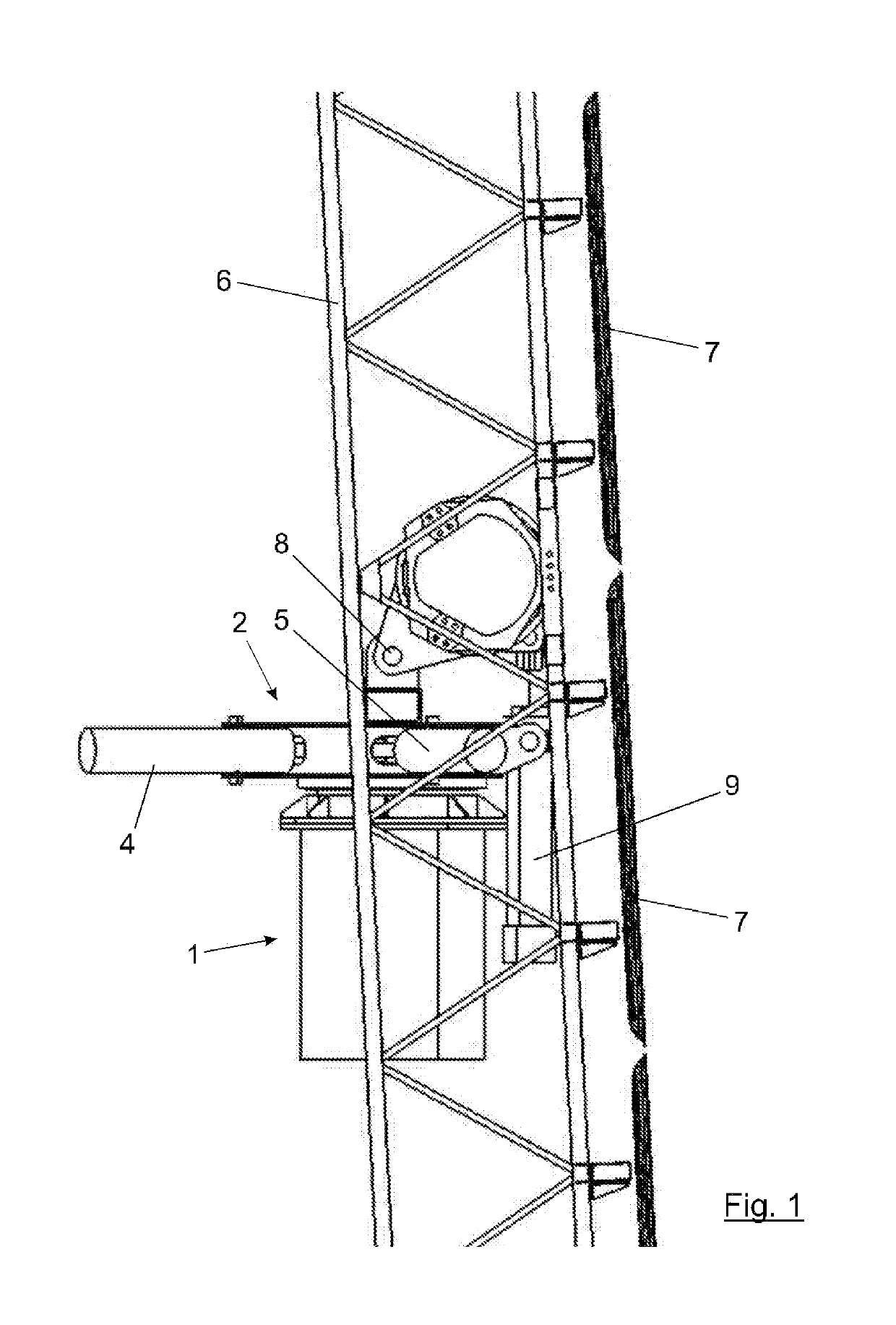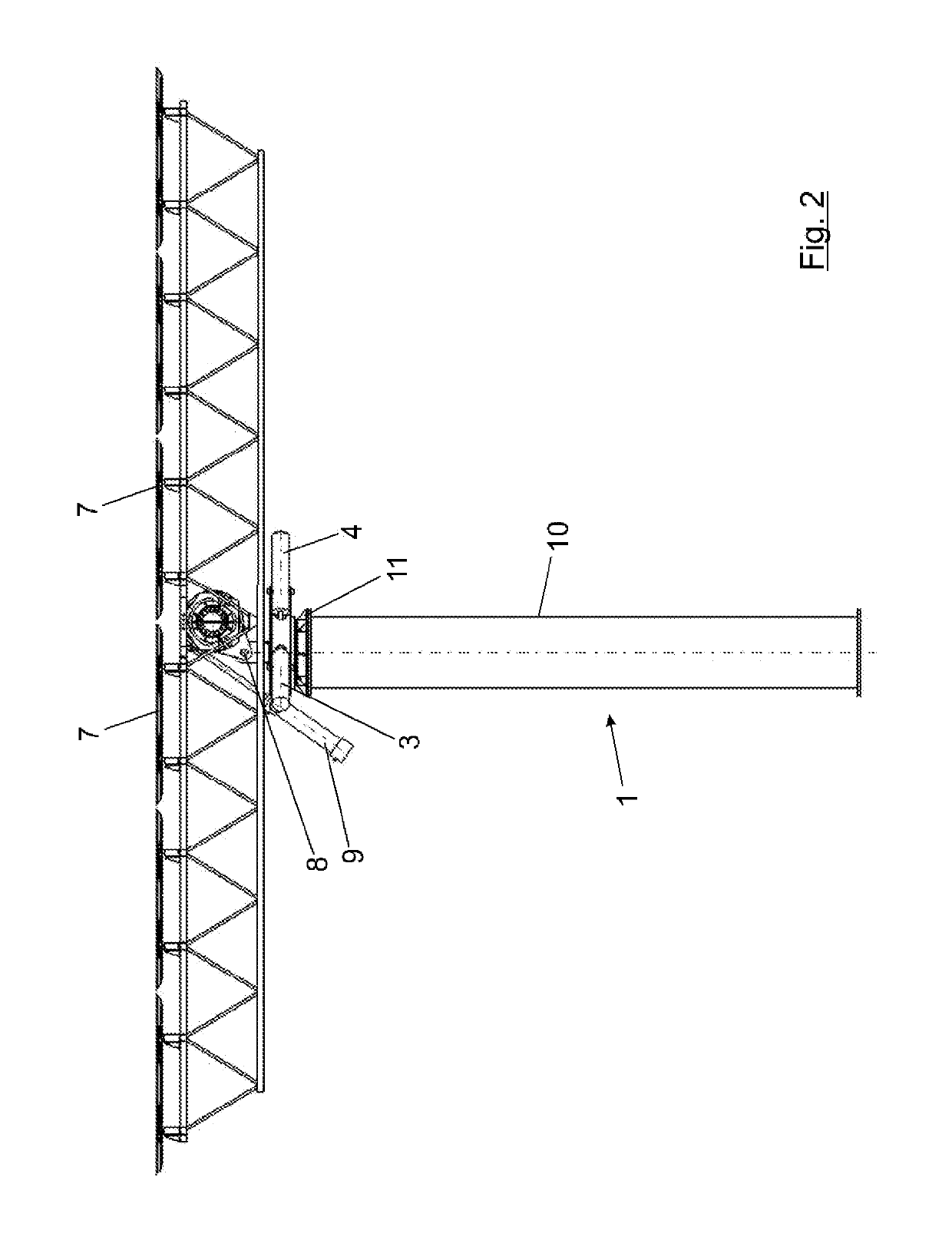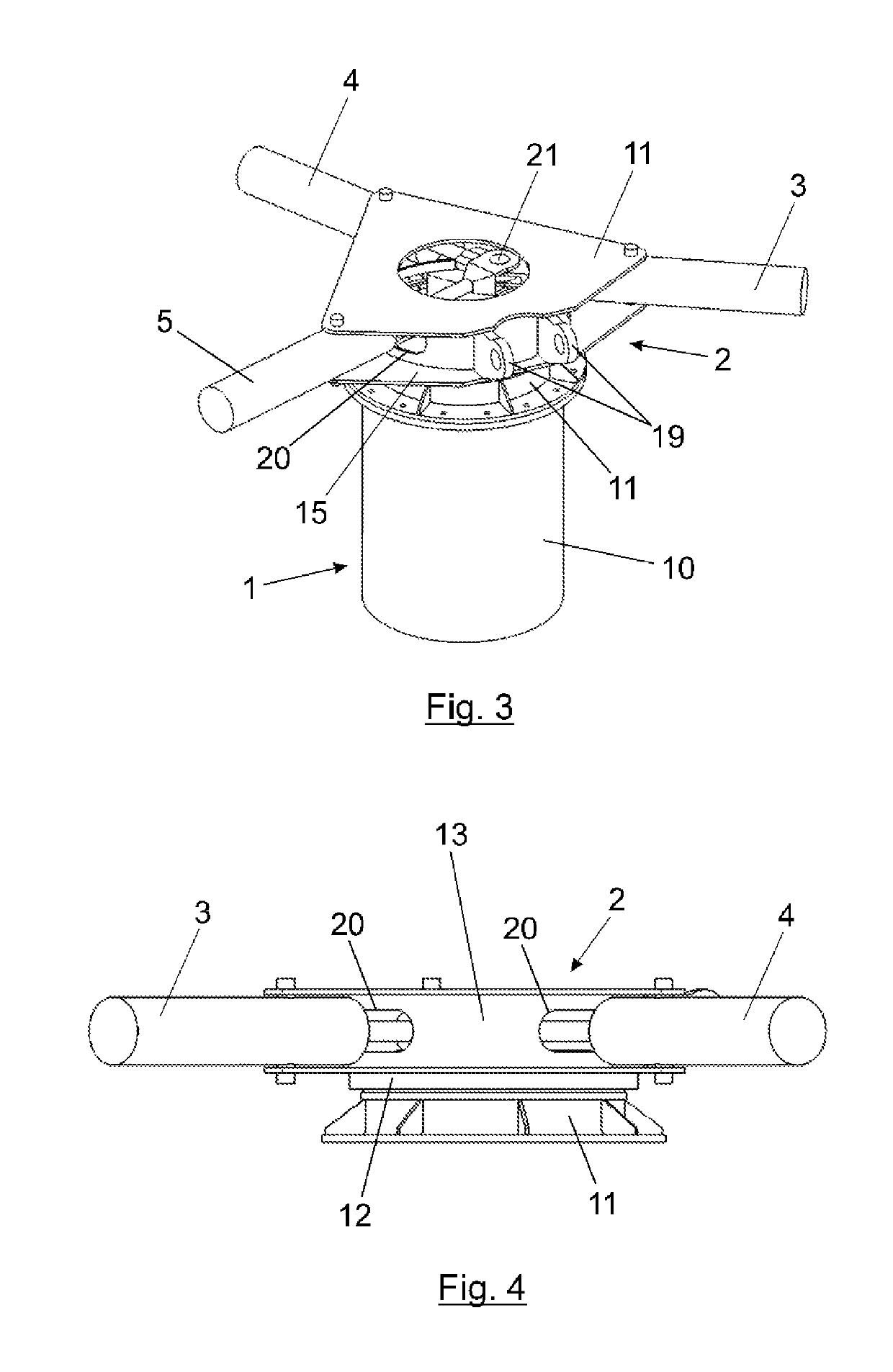Azimuthal rotation mechanism for solar trackers
a solar tracker and azimuthal rotation technology, applied in solar heat systems, photovoltaic supports, lighting and heating apparatus, etc., can solve the problems of high cost, high cost, and difficult azimuthal rotation mechanism, and achieve simple and cheaper, high efficiency, and optimal balance
- Summary
- Abstract
- Description
- Claims
- Application Information
AI Technical Summary
Benefits of technology
Problems solved by technology
Method used
Image
Examples
Embodiment Construction
[0031]FIGS. 1 and 2 show a solar tracker composed of a fixed vertical pedestal (1), on which a rotating support (2) is mounted and that can rotate around a vertical shaft, coinciding with the shaft of the vertical pedestal (1). The rotation of the rotating support (2) is achieved by means of the joint actuation of three hydraulic cylinders (3, 4 and 5) preferably arranged in an equidistant angular position and located in the same horizontal plane.
[0032]The rotating support (2) holds the structure (6) on which the mirrors (7) are mounted, which receive the direct effects of the solar rays. The structure (6) may pivot around the horizontal shaft (8) between a vertical position, FIG. 1, and a horizontal position, FIG. 2, with the actuation of the elevator cylinder (9) which casing is articulated among the lugs of the support (2) that are joined together.
[0033]By means of the elevator cylinder (9), the mirrors (7) may occupy any position between a vertical position, FIG. 1, and a horizo...
PUM
 Login to View More
Login to View More Abstract
Description
Claims
Application Information
 Login to View More
Login to View More - R&D
- Intellectual Property
- Life Sciences
- Materials
- Tech Scout
- Unparalleled Data Quality
- Higher Quality Content
- 60% Fewer Hallucinations
Browse by: Latest US Patents, China's latest patents, Technical Efficacy Thesaurus, Application Domain, Technology Topic, Popular Technical Reports.
© 2025 PatSnap. All rights reserved.Legal|Privacy policy|Modern Slavery Act Transparency Statement|Sitemap|About US| Contact US: help@patsnap.com



